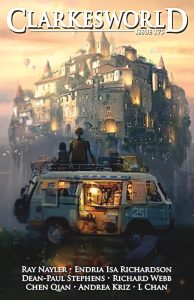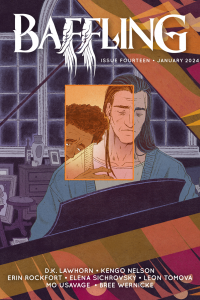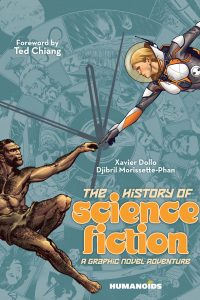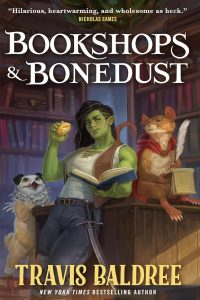Karen Burnham Reviews Short Fiction: Strange Horizons and Clarkesworld
 Strange Horizons 3/29/21, 4/21
Strange Horizons 3/29/21, 4/21
Clarkesworld 4/21
At the end of March Strange Horizons published a special issue featuring Palestinian speculative fiction. It includes art, poetry, four stories, and an introductory essay, and features creators from across the Palestinian diaspora. “Wills” by Wadih Haddad is very short and very Weird, starting with a man in a sort of consumer hypnotic state coming awake with the statement “I want,” then traversing the landscape through streets and stores, panicking, and step-by-step evolving his initial statement. The ending is quite pyrotechnic. In “The Center of the Universe” by Nadia Shammas it quickly becomes clear that we’re seeing a VR world created for one person alone, Abigail, but we’re seeing it through the eyes of Fatima, one of Abigail’s “friends” created by the computer. She can only really move, talk, and feel when Abigail is actively paying attention to her, and all the other characters are the same. That creates an incredibly perverse incentive to keep the attention on herself when Abigail spills hot coffee on Fatima and Fatima realizes she can feel pain in that state. This is an incisive look at a scenario that’s a lot more broadly applicable than just to VR. “Native Country” by Karim Kattan centers on Noor, a man raised in a seaside city and about to return to the swampland that his mother came from. She roundly rejected the culture she left behind, but Noor has been trained by his Uncle Faiz in his specialty of potion-making, and Noor is going to meet him despite his mother’s objections. There are lovely descriptions of his travels along the way, and a lot of time to expand on Noor’s upbringing, his perspective, the changing landscape and transition between cultures. This story has a serious surprise in wait at the ending. Finally, “A Day in the Life of Anmar 20×1” by Abdulla Moaswes is a darkly hilarious political satire in which Anmar, a rich tech executive, has been tapped to be Palestine’s president despite having no political experience. He experiences the world only from the confines of his high-tech estate, which keeps him from having to see anything unpleasant, especially the walls that surround it. His much more experienced deputy is in despair at the whims of this petulant debutante. This is obviously grounded in the reality of Palestinian politics, but I suspect many others will feel a resonance with politicians in their own home countries.
After the special issue, the stories for April continue strongly. My favorite was “The Giant with No Heart in Her Body” by Nike Sulway. This story focuses on grief with a crystalline clarity when a giant tries to hide her heart and dreams of crows coming and dropping her brother’s bones in all her hiding places. The writing is just beautiful and it evokes sentiments both unique and universal. There is also “We Broke Nairobi” by Noel Cheruto, a harrowing story of a time when Nairobi is struck by lethal heat. Certain lowlifes (as the narrator refers to them) turn out to be immune and start acting as runners for the rest of the population. Rumors fly, turf wars ensue, there’s fraud and murder until finally every last drop of water evaporates and even the runners have to beg. Finally “Sandrine” by Alexandra Munck gives us a tumultuous college romance with a heck of a twist: Nicole loves Elaine, a sun god complete with three planets orbiting her. On one, squid life is evolving and giving her constant (literal) headaches. Nicole both loves Elaine for herself but is also hypnotized watching Sandrine, a planet constantly covered by sandstorms. It turns out those storms are covering one of Elaine’s deepest secrets.
Clarkesworld has two strong novelettes in April, starting with “Sarcophagus” by Ray Nayler. A person’s consciousness has been beamed to a planet tagged as inhabitable to be re-embodied as part of an exploratory team. But things quickly go wrong as it turns out that the planet is only as inhabitable as Antarctica and the other team members don’t materialize. The unnamed narrator is journeying to try to find a supply depot in their amazing but not limitless survival suit, and it looks like the planet might harbor some form of native life – evidenced by both husks of small lifeforms in the lee of certain rocks, and also by an almost indistinguishable monster glimpsed only rarely. With the survival suit running low on everything, it’s a slog to the depot, which will have more revelations in store. This is a classic survival-in-a-hostile-environment story, well told with some great twists. The other novelette is “Ouroboros” by Dean-Paul Stephens. In this story Rama is the newest AI on a ship full of only digital beings, after the last Programmer (human) has died. They’re orbiting a binary star system where it turns out sentient life is evolving on one of the planets. With 4,000 years between each close pass to the planet of interest, the AIs (all named after deities from all over old Earth) have plenty of time to debate how to proceed. Rama is the most paranoid of all, but many AIs want to reach out to the new life forms and give them all the technological advances they possess. In a ship that’s full of a library that contains all of Earth’s science fiction (many classic SF books from the 20th and 21st centuries get shout-outs), it’s amazing that anyone thinks that’s a good idea – Rama certainly doesn’t. There is plenty of drama as outreach attempts are made with plenty of reversals. In this story the cerebral debates are central and any physical drama happens largely offstage, appropriate for a tale only inhabited by AIs.
With the shorter stories Richard Webb brings us “The Sheen of Her Carapace“, in which the narrator is a crewmember of a star ship who has to take gun-meds that make them physically stand out from the rest of the crew. When the ship is damaged and they have to land for repairs, the narrator is the first to reach out to the insectoid race that seems sentient, and becomes very attached to one they name “Rose.” The rest of the crew has little sympathy for the aliens, and our hero has to make a stand – which is noble, but when you’ve alienated your crew and you’re an alien among aliens, where does that leave you? “Catching the K Beast” by Chen Qian (translated by Carmen Yiling Yan) is a fun story about a duo who travel far and wide capturing exotic creatures. They’ve been dispatched to trap the titular beast, one that can apparently see 12 seconds into the future, but the mission hits a snag when they crash land and lose their language-learning modules. Old Lin starts learning the local language the old-fashioned way, while the narrator focuses on how to trap a creature that can see a trap being sprung many seconds before it shuts. There’s a clever work-around to the creature’s precognition, but it’s Old Lin’s language skills that will ultimately save the day, since the pair are in even more jeopardy than they realize as the seasons of the planet start to change. The final story of the issue is “A House Is Not a Home” by L Chan. This particular house keeps trying to make things work after her Resident has been arrested and dragged away for apparently political crimes. The House tries her best to keep things functioning even as the government routinely accesses all her memory banks, although she has many blind spots. This story of a “smart” house functioning without an owner present put me in mind of Bradbury’s most poignant mode, though this house turns out to have a more pressing agenda to pursue.
Recommended Stories
“A Day in the Life of Anmar 20×1”, Abdulla Moaswes (Strange Horizons 3/29/21)
“Sarcophagus”, Ray Nayler (Clarkesworld 4/21)
“Ouroboros”, Dean-Paul Stephens (Clarkesworld 4/21)
“The Giant with No Heart in Her Body”, Nike Sulway (Strange Horizons 4/12/21)
Karen Burnham is an electromagnetics engineer by way of vocation, and a book reviewer/critic by way of avocation. She has worked on NASA projects including the Dream Chaser spacecraft and currently works in the automotive industry in Michigan. She has reviewed for venues such as Locus Magazine, NYRSF, Strange Horizons, SFSignal.com, and Cascadia Subduction Zone. She has produced podcasts for Locusmag.com and SFSignal.com, especially SF Crossing the Gulf with Karen Lord. Her book on Greg Egan came out from University of Illinois Press in 2014, and she has twice been nominated in the Best Non-Fiction category of the British SF Awards.
This review and more like it in the June 2021 issue of Locus.
 While you are here, please take a moment to support Locus with a one-time or recurring donation. We rely on reader donations to keep the magazine and site going, and would like to keep the site paywall free, but WE NEED YOUR FINANCIAL SUPPORT to continue quality coverage of the science fiction and fantasy field.
While you are here, please take a moment to support Locus with a one-time or recurring donation. We rely on reader donations to keep the magazine and site going, and would like to keep the site paywall free, but WE NEED YOUR FINANCIAL SUPPORT to continue quality coverage of the science fiction and fantasy field.
©Locus Magazine. Copyrighted material may not be republished without permission of LSFF.







